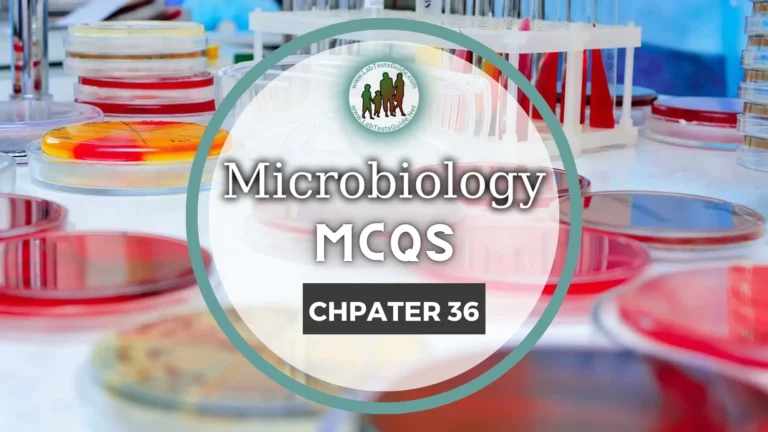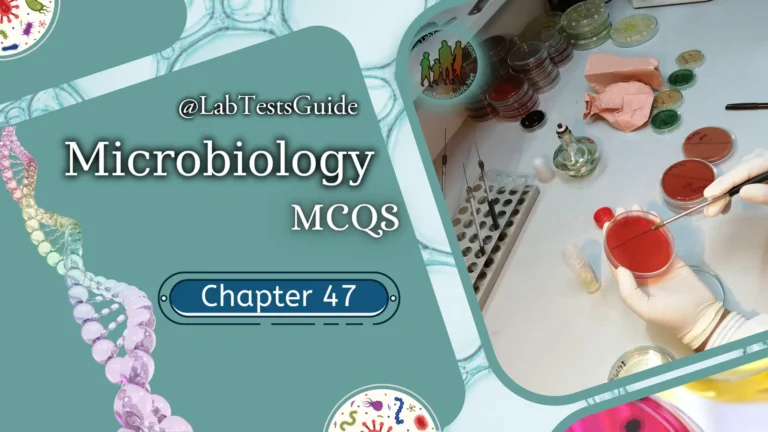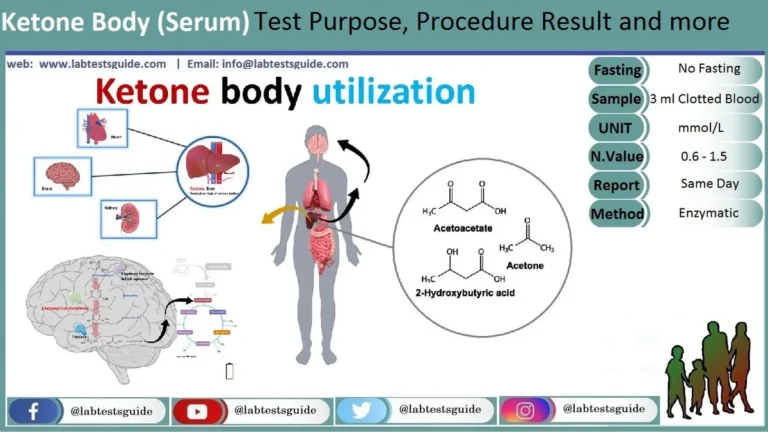Salmonella is a rod-shaped, gram-negative motile rod that moves with the use of its peritrichous flagella. The genus Salmonella can be divided into two species (S. enterica and S. bongori), according to its phenotypic profile. The genus Salmonella is a member of the Enterobacteriaceae family. Salmonella is one of the most common causes of foodborne illness in the world.

Introduction to Salmonella:
Salmonella is a type of bacteria that can cause illness in humans and animals. There are many different types of Salmonella bacteria, but the most common ones that cause illness in humans are Salmonella enterica and Salmonella bongori. Salmonella infections can cause a wide range of symptoms, including diarrhea, fever, stomach cramps, and vomiting. These symptoms can range from mild to severe, and can last from a few days to several weeks. Salmonella bacteria are commonly found in contaminated food and water, as well as in the feces of infected animals and humans. Preventing Salmonella infections involves taking steps to ensure that food and water are properly prepared and handled, and that good hygiene practices are followed.
Types of Salmonella bacteria:
There are two main types of Salmonella bacteria:
- Salmonella enterica – This is the most common type of Salmonella that causes illness in humans. It has over 2,500 different serotypes, which are variations of the bacteria with different surface proteins. Some of the most common serotypes include Salmonella Typhimurium, Salmonella Enteritidis, and Salmonella Newport.
- Salmonella bongori – This type of Salmonella is less common and usually only causes illness in reptiles. It has only one serotype, Salmonella bongori 48:z35:-.
Both types of Salmonella can cause illness, but Salmonella enterica is the most important in terms of human health. Different serotypes of Salmonella enterica can cause different symptoms and have varying levels of virulence.
Thphoidal vs. Non-Typhoidal Salmonella:
Salmonella bacteria can be divided into two main groups based on the type of illness they cause in humans:
- Non-typhoidal Salmonella (NTS) – This group includes most types of Salmonella bacteria that cause food poisoning in humans. NTS infections can cause symptoms such as diarrhea, stomach cramps, fever, and vomiting, and typically last for several days to a week. NTS infections are usually not life-threatening and can be treated with antibiotics if necessary.
- Typhoidal Salmonella – This group includes a specific set of Salmonella serotypes that can cause a more severe illness known as typhoid fever. These serotypes include Salmonella Typhi, Salmonella Paratyphi A, Salmonella Paratyphi B, and Salmonella Paratyphi C. Typhoid fever is a systemic illness that can cause symptoms such as high fever, weakness, abdominal pain, and sometimes a rash. Typhoid fever can be life-threatening if not treated promptly with antibiotics.
The distinction between NTS and typhoidal Salmonella is important because they have different clinical manifestations, epidemiology, and treatment approaches. NTS infections are much more common than typhoidal Salmonella infections and are usually acquired from contaminated food or water. Typhoidal Salmonella infections are less common but can be more serious and are usually associated with travel to endemic areas or consumption of contaminated food or water in those areas.
Characteristics of Salmonella:
Salmonella bacteria are Gram-negative, rod-shaped bacteria that belong to the family Enterobacteriaceae. They are facultative anaerobes, which means they can grow in both the presence and absence of oxygen. Other characteristics of Salmonella bacteria include:
- Motility: Salmonella bacteria are motile and have peritrichous flagella (i.e., flagella all around the cell).
- Biochemical properties: Salmonella bacteria are oxidase-negative and ferment glucose, producing acid and gas.
- Growth conditions: Salmonella bacteria grow well at temperatures between 37°C and 42°C and can survive in a wide range of environmental conditions, including acidic and low-oxygen environments.
- Antigenic properties: Salmonella bacteria have a complex antigenic structure, which allows them to be classified into different serotypes based on their surface antigens.
- Pathogenicity: Salmonella bacteria are pathogenic and can cause a range of illnesses in humans and animals, including gastroenteritis, typhoid fever, and sepsis.
- Facultative anaerobes: Salmonella bacteria can grow in the presence or absence of oxygen, although they prefer environments with low oxygen levels.
- Resistance to acid: Salmonella bacteria can survive in acidic environments, such as the stomach, which helps them to cause infection.
- Biofilm formation: Salmonella bacteria can form biofilms, which are communities of bacteria that adhere to surfaces and are difficult to remove.
- Acid-tolerant: Salmonella bacteria are able to survive in acidic environments, which can help them survive in the acidic conditions of the stomach and intestines.
- Heat-stable: Some strains of Salmonella bacteria are heat-stable and can survive cooking and other food processing methods that would normally kill other bacteria. This makes Salmonella a common cause of foodborne illness.
These characteristics of Salmonella bacteria help to explain their ability to survive and cause infection in a wide range of environments, as well as their complex antigenic structure and pathogenicity.
Biochemical Test of Salmonella:
| Test | Result for Salmonella |
|---|---|
| Citrate utilization | Negative |
| Urease | Negative |
| Lysine decarboxylase | Positive |
| Ornithine decarboxylase | Positive |
| Arginine dihydrolase | Positive |
| Phenylalanine deaminase | Negative |
| Indole production | Negative |
| Sorbitol fermentation | Negative |
| Maltose fermentation | Positive |
| Lactose fermentation | Negative |
| Sucrose fermentation | Negative |
| Arabinose fermentation | Positive |
| Mannitol fermentation | Negative |
| Inositol fermentation | Negative |
| Dulcitol fermentation | Negative |
| Melibiose fermentation | Positive |
| Raffinose fermentation | Negative |
| Sodium chloride tolerance | Positive |
| Motility | Positive |
| Nitrate reduction | Positive |
| Voges-Proskauer test | Negative |
| Methyl red test | Positive |
| Catalase | Positive |
| Oxidase | Negative |
| Gelatin hydrolysis | Positive |
| Starch hydrolysis | Negative |
| Casein hydrolysis | Positive |
| Growth on MacConkey agar | Non-lactose fermenter |
| Growth on Hektoen enteric agar | Yellow colonies, black center |
| Growth on XLD agar | Yellow colonies, black center |
| Growth on Bismuth sulfite agar | Black colonies |
| Growth on Salmonella-Shigella agar | Colorless colonies |
| Growth on Brilliant green agar | Colorless colonies |
| Growth on Desoxycholate citrate agar | Colorless colonies |
| Growth on TCBS agar | Inhibited |
| Growth on Selenite broth | Positive |
| Growth on Tetrathionate broth | Positive |
| Growth on Hektoen enteric agar with 2,3,5-triphenyltetrazolium chloride (TTC) | Red colonies, black center |
| Growth on XLD agar with TTC | Red colonies, black center |
Symptoms of Salmonella infection:
The symptoms of a Salmonella infection can vary depending on the serotype of the bacteria and the individual’s immune system, but common symptoms include:
- Diarrhea, which may be bloody or watery
- Stomach cramps and pain
- Fever and chills
- Nausea and vomiting
- Headache
- Muscle aches
- Dehydration
- Loss of appetite
- Fatigue
- Joint pain
Symptoms usually appear within 12 to 72 hours after exposure to the bacteria, and can last for several days to a week. In some cases, the infection can spread to the bloodstream and cause a more serious illness known as bacteremia, which can lead to sepsis and other complications. Infants, elderly individuals, and people with weakened immune systems are at higher risk of developing severe Salmonella infections.
Transmission of Salmonella:
Salmonella bacteria can be transmitted in a variety of ways, including:
- Contaminated food: Eating food that has been contaminated with Salmonella bacteria is the most common way to become infected. Foods that are commonly associated with Salmonella outbreaks include poultry, meat, eggs, dairy products, and fresh produce.
- Contaminated water: Drinking water that has been contaminated with Salmonella bacteria can also cause infection, especially in areas where sanitation and water treatment are poor.
- Person-to-person : Salmonella bacteria can be transmitted from one person to another through direct or indirect contact with fecal matter. This can happen in households or in settings such as daycare centers or nursing homes.
- Animal contact: Contact with infected animals or their feces can also transmit Salmonella bacteria. Reptiles, poultry, and livestock are common sources of infection.
- Environmental contamination: Salmonella bacteria can survive for long periods of time in soil, water, and other environmental sources, and can be transmitted through contact with contaminated surfaces or objects.
Preventing Salmonella infections involves taking steps to minimize the risk of exposure, such as cooking food thoroughly, practicing good hand hygiene, avoiding contact with infected animals and their feces, and ensuring that water sources are safe and properly treated.
Risk factors for Salmonella infection:
Some of the common risk factors for Salmonella infection include:
- Consumption of contaminated food – Eating food that has been contaminated with Salmonella bacteria is the most common way to become infected.
- Exposure to infected animals or their feces – Reptiles, poultry, and livestock are common sources of Salmonella infection.
- Travel to endemic areas – People who travel to areas where Salmonella is more prevalent are at higher risk of infection.
- Weakened immune system – People with weakened immune systems, such as infants, elderly individuals, and those with certain medical conditions, are more susceptible to Salmonella infection.
- Medications – Certain medications, such as proton pump inhibitors and antacids, can increase the risk of Salmonella infection by reducing stomach acid levels and making it easier for the bacteria to survive.
- Contact with infected individuals – Salmonella bacteria can be transmitted from person to person through direct or indirect contact with fecal matter.
- Poor sanitation – Areas with poor sanitation and hygiene practices are more likely to have contaminated food and water sources, increasing the risk of Salmonella infection.
- Occupation – Certain occupations, such as those involving animal handling or food preparation, can increase the risk of Salmonella infection.
It’s important to note that anyone can become infected with Salmonella, but certain groups are more vulnerable to severe illness and complications, particularly young children, the elderly, and those with weakened immune systems.
Diagnosis of Salmonella infection:
The diagnosis of a Salmonella infection typically involves a combination of clinical evaluation and laboratory testing. Some of the common diagnostic methods include:
- Stool culture – A stool sample is collected and tested in a laboratory to determine the presence of Salmonella bacteria.
- Blood culture – In cases of severe illness, a blood sample may be collected and tested to determine if the bacteria have spread to the bloodstream.
- Serologic testing – A blood test may be performed to detect antibodies to Salmonella bacteria, which can help confirm a recent or past infection.
- Polymerase chain reaction (PCR) – PCR testing can detect the genetic material of Salmonella bacteria in stool samples.
If a person is suspected to have a Salmonella infection based on their symptoms and risk factors, their healthcare provider may order one or more of these tests to confirm the diagnosis. It’s important to note that not all Salmonella infections require medical treatment, as many cases are mild and self-limiting. However, in severe cases, hospitalization and antimicrobial therapy may be necessary.
Treatment of Salmonella infection:
The treatment of Salmonella infection depends on the severity of the illness and the individual’s overall health status. In most cases, the infection is self-limiting and does not require specific medical treatment. However, for people with severe or prolonged symptoms, or those at high risk for complications, medical intervention may be necessary.
Some of the common treatments for Salmonella infection include:
- Rehydration – Drinking plenty of fluids and electrolyte solutions can help prevent dehydration, which is a common complication of Salmonella infection.
- Antibiotics – In severe cases, antimicrobial therapy may be necessary to treat the infection and prevent complications. However, antibiotics are not always recommended for mild or uncomplicated cases, as they can increase the risk of antibiotic resistance.
- Symptomatic treatment – Over-the-counter medications like acetaminophen or ibuprofen can help relieve fever, pain, and other symptoms associated with Salmonella infection.
- Hospitalization – In rare cases, hospitalization may be required for people with severe Salmonella infection or those at high risk for complications, such as infants, elderly individuals, and people with weakened immune systems.
It’s important to note that some strains of Salmonella have become resistant to certain antibiotics, making treatment more challenging. Therefore, it’s crucial to use antibiotics judiciously and only when necessary, and to follow proper food safety and hygiene practices to prevent the spread of Salmonella infection.
Prevention of Salmonella infection:
Some of the ways to prevent Salmonella infection include:
- Practice good hygiene – Wash your hands frequently with soap and water, especially before and after handling food, using the bathroom, or interacting with animals.
- Proper food handling – Cook meat, poultry, and eggs thoroughly to kill any bacteria that may be present. Avoid cross-contamination by keeping raw meat and other foods separate during preparation.
- Safe food storage – Refrigerate perishable foods promptly and discard any food that has been left at room temperature for more than two hours.
- Avoid high-risk foods – Avoid consuming raw or undercooked eggs, meat, and poultry, as well as unpasteurized milk and juice.
- Be cautious when traveling – Be careful when eating and drinking in areas with poor sanitation and hygiene practices. Stick to bottled or boiled water and avoid ice made from tap water.
- Keep pets clean – Wash your hands after handling reptiles, birds, and other animals, and keep their living areas clean to prevent the spread of bacteria.
- Monitor your health – Be aware of the symptoms of Salmonella infection and seek medical attention if you experience any of them.
By following these guidelines, you can significantly reduce your risk of Salmonella infection and help prevent the spread of the bacteria to others.
FAQs:
What is Salmonella?
Answer: Salmonella is a type of bacteria that can cause food poisoning or salmonellosis in humans.
What are the symptoms of Salmonella infection?
Answer: The symptoms of Salmonella infection include fever, diarrhea, abdominal cramps, and vomiting.
How is Salmonella transmitted?
Answer: Salmonella is typically transmitted through contaminated food or water, or contact with infected animals.
How long does it take for symptoms of Salmonella to appear after infection?
Answer: Symptoms of Salmonella infection usually appear 6-72 hours after infection.
How is Salmonella infection diagnosed?
Answer: Salmonella infection can be diagnosed through stool culture or blood tests.
How is Salmonella infection treated?
Answer: Treatment for Salmonella infection typically involves rehydration, antibiotics (in severe cases), and symptomatic treatment.
How long does a Salmonella infection last?
Answer: A Salmonella infection typically lasts for 4-7 days, but can last longer in severe cases.
How can Salmonella infection be prevented?
Answer: Salmonella infection can be prevented through good hygiene, proper food handling and storage, and avoiding high-risk foods.
Who is at high risk for Salmonella infection?
Answer: Infants, elderly individuals, and people with weakened immune systems are at higher risk for Salmonella infection.
Can Salmonella infection be fatal?
Answer: Salmonella infection can be fatal in rare cases, particularly in people with weakened immune systems or other underlying health conditions.
Can you get Salmonella from pets?
Answer: Yes, Salmonella can be transmitted from pets to humans through contact with contaminated feces, saliva, or other bodily fluids.
Can Salmonella be spread through the air?
Answer: No, Salmonella is not typically spread through the air, but rather through contaminated food, water, or contact with infected animals.
Can Salmonella infection recur?
Answer: Yes, it is possible to get Salmonella infection again, particularly if proper food safety and hygiene practices are not followed.
Can Salmonella be detected in food?
Answer: Yes, Salmonella can be detected in food through laboratory testing.
How can Salmonella outbreaks be prevented?
Answer: Salmonella outbreaks can be prevented through proper food safety practices at all levels of production and distribution, including testing and inspection of food products.
Conclusion:
In conclusion, Salmonella is a type of bacteria that can cause food poisoning or salmonellosis in humans. It can be transmitted through contaminated food or water, or contact with infected animals. The symptoms of Salmonella infection include fever, diarrhea, abdominal cramps, and vomiting. Salmonella infection can be diagnosed through stool culture or blood tests and is typically treated with rehydration, antibiotics (in severe cases), and symptomatic treatment. Salmonella infection can be prevented through good hygiene, proper food handling and storage, and avoiding high-risk foods. Infants, elderly individuals, and people with weakened immune systems are at higher risk for Salmonella infection. Salmonella outbreaks can be prevented through proper food safety practices at all levels of production and distribution.
References:
- Centers for Disease Control and Prevention. Salmonella. Retrieved from https://www.cdc.gov/salmonella/index.html
- World Health Organization. Salmonella. Retrieved from https://www.who.int/news-room/fact-sheets/detail/salmonella-(non-typhoidal)
- Food and Drug Administration. Bad Bug Book: Salmonella. Retrieved from https://www.fda.gov/food/foodborne-pathogens/salmonella-salmonellosis
- Mayo Clinic. Salmonella infection. Retrieved from https://www.mayoclinic.org/diseases-conditions/salmonella/symptoms-causes/syc-20355329
- MedlinePlus. Salmonella infections. Retrieved from https://medlineplus.gov/salmonellainfections.html
Possible References Used






